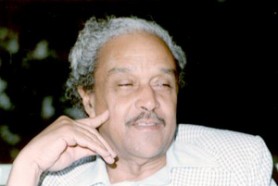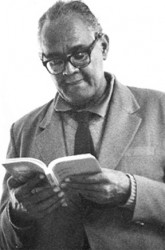Last week we considered what constitutes Guyanese Literature in the Pre-Independence era, focusing on the Colonial period. Within the two broad historical divisions of the writing – before and after Independence – there are important functional sub-divisions which do not only relate historical periods/chronology/dates. They take into consideration the essential qualities and preoccupations of the writing that justify the finer compartments.
Although everything before 1966 is Colonial, for example, there are differences in the types of work produced which prompts the use of different labels. It begins, of course, with the period of Indigenous Oral Literature, otherwise known as the Pre-Columbian or Pre-Colonial era. Then follows the Colonial period dominated by expatriate authors, some of whom were resident, writing about the colony. Added to the imitative quality of the creative literature and what was written by natives of the country, it was truly a literature of colonials. Yet, paradoxically and ironically, it was in that Colonial period that most of the country’s indigenous oral literature was documented and published.
This week, we turn to the period of Modern Guyanese literature when writing by native Guyanese in the literary tradition began. That was followed by the early period of nationalism and the development of social realism; those will take us up to 1966.
 Modern Guyanese Literature was born in the 1880s and the writer recognised as the father of it is Leo – Egbert Martin (1861 – 1890). We get deep studies of him from David Dabydeen (ed) Selected Poems of Egbert Martin (2007) and Manu Samriti Chander, (ed) Scriptology (2014). Leo published two collections of poetry including Leo’s Poetical Works and one of fiction between 1883 and 1889 to become the first native of the Caribbean to publish such collections.
Modern Guyanese Literature was born in the 1880s and the writer recognised as the father of it is Leo – Egbert Martin (1861 – 1890). We get deep studies of him from David Dabydeen (ed) Selected Poems of Egbert Martin (2007) and Manu Samriti Chander, (ed) Scriptology (2014). Leo published two collections of poetry including Leo’s Poetical Works and one of fiction between 1883 and 1889 to become the first native of the Caribbean to publish such collections.
But there is more than that distinction that causes us to say he founded a national literature. There was more originality in his work than any of his contemporaries, those in the decades before him, and those in the decades to follow. Despite the fact that he was ahead of the field, he has to be regarded as having started an era because of the characteristics and contents of his work, particularly the poetry.

Martin was a Victorian, and wrote very much according to the style of his time, but what is extraordinary about him is that he did not fall into imitation, but created Guianese work in subject and orientation. While landscape poetry was prevalent among English Romantics and Victorians as well as Caribbean poets right up through the early twentieth century, Martin’s landscape is rooted in Guiana. Rivers, the interior, the forests and the supernatural presence abound in poems which run with their own rhythms despite iambic metre.
Alone as he was during his lifetime, Martin was to have company in the advancement of local writing in 1897. Joseph Ruhomon’s non-fiction work “India: The Progress of Her People at Home and Abroad and how those in British Guiana may Improve Themselves” was an important stimulus for much other work that followed it. Ruhoman was the first author of Indian descent to publish work in the Caribbean (Clem Seecharran: India and the Shaping of The Indo-Guyanese Imagination, 1993) and virtually set in train an ethnic and cultural consciousness in British Guiana that developed in the first half of the century. This also involved the growing nationalism that helped to shape the literature at the same time.

A parallel growth of consciousness among Blacks in the colony took place, partly driven by the works of Norman E Cameron who began to write plays, published The Evolution of the Negro and an Anthology of Guianese Poetry 1831 – 1931 (1931). This was also aided by the spread of Garveyism and the visit of Marcus Garvey to BG in the 1930s.
Despite these, however, the marked quality of imitation in the poetry continued despite a new push towards local awareness and cultural development. The publication of the Anthology of Guianese Indian Verse edited by C E J Ramcharitar Lalla is a good example of this since the anthologist was pushed by the whole movement that started with Ruhomon and his brother Peter Ruhomon. It was a nationalist push but the poems were still imitations of English verse.
Where poetry is concerned there were those such as Walter Mc A Lawrence who tried to be Guyanese in an imitative way. Guyanese critic Jeffrey Robinson commented with tongue in cheek that the very famous and patriotic poem “O Beautiful Guyana” which has also been set to music, is supposed to be proclaiming the beauty of the land of Guyana, but the poet is standing with his back to the land gazing out into the Atlantic Ocean. That same period, however, saw the rise of A J Seymour who advanced the cause of national poetry considerably. Seymour and Kyk-Over-Al were largely responsible

for the major thrust in this early period of nationalism in Guyanese literature through the 1940s and fifties. Here is where the nation’s literature was truly solidified.
Several other major poets were to rise including Wilson Harris, Martin Carter and Edgar Mittelholzer. Kyk-Over-Al was to contribute to steady development in the literature, with a role also being played by the PEN Club and poet Donald Trotman. The place of Harris and Carter is also important in this period which saw Carter becoming the country’s foremost major poet with work firmly rooted in a Guyanese nation even before political Independence.
That was also the period of the rise of social realism in Modern Guyanese Literature, and that was founded by Mittelholzer as a novelist and fiction writer. The novel credited with having achieved this is Corentyne Thunder (1941) about East Indian peasants in their rural environment. This work was pre-dated by others about Indian indentureship – Those That Be In Bondage (1917) by ARF Webber and Lutchmee and Dilloo by Edward Jenkins. Despite their subjects, neither of them captured the subject or achieved social realism. Mittelholzer first got to the root of this and furthered this brand of literature in later works. In particular, The Life and Death of Sylvia did for old Georgetown what Corentyne Thunder did for the rural Indian life and both for the literature social realism in Guyana before Independence.
However, this is not Mittelholzer’s only claim to the exalted place he occupies in the nation’s letters, since his career and range of work from A Morning At the Office to My Bones and My Flute in his prolific corpus represent not only Guyanese, but West Indian literature. Other novelists were to follow, such as Roy Heath, Peter Kempadoo and Wilson Harris. While Heath progressed the state of social realism, Harris created new forms and preoccupations in the crafting of the novel which had significant impact on the world.
Palace of the Peacock (1960) started a fictional form that Harris was to perfect in several later novels prompting English critic Kathleen Raine to remark that he revolutionized the form of the English novel that had been static for 100 years. Guyanese literature before Independence is considerably elevated by Harris’ Guyana quartet a group that adds The Secret Ladder, The Far Journey of Oudin and The Whole Armour to Palace of the Peacock.
What is to be gleaned from this account is the way Modern Guyanese Literature began to come into its own in this early period of Nationalism and of Social Realism. It is here that the literature began to acquire an identity and develop characteristics that may be described as national. In addition there was much more work of high standard and exceptional quality to enlarge the national output.
This was to continue after 1966. Nationalism deepened as a quality of the writing and the next significant impact upon the way the literature developed was the nation’s acquisition of Republican status in 1970.








